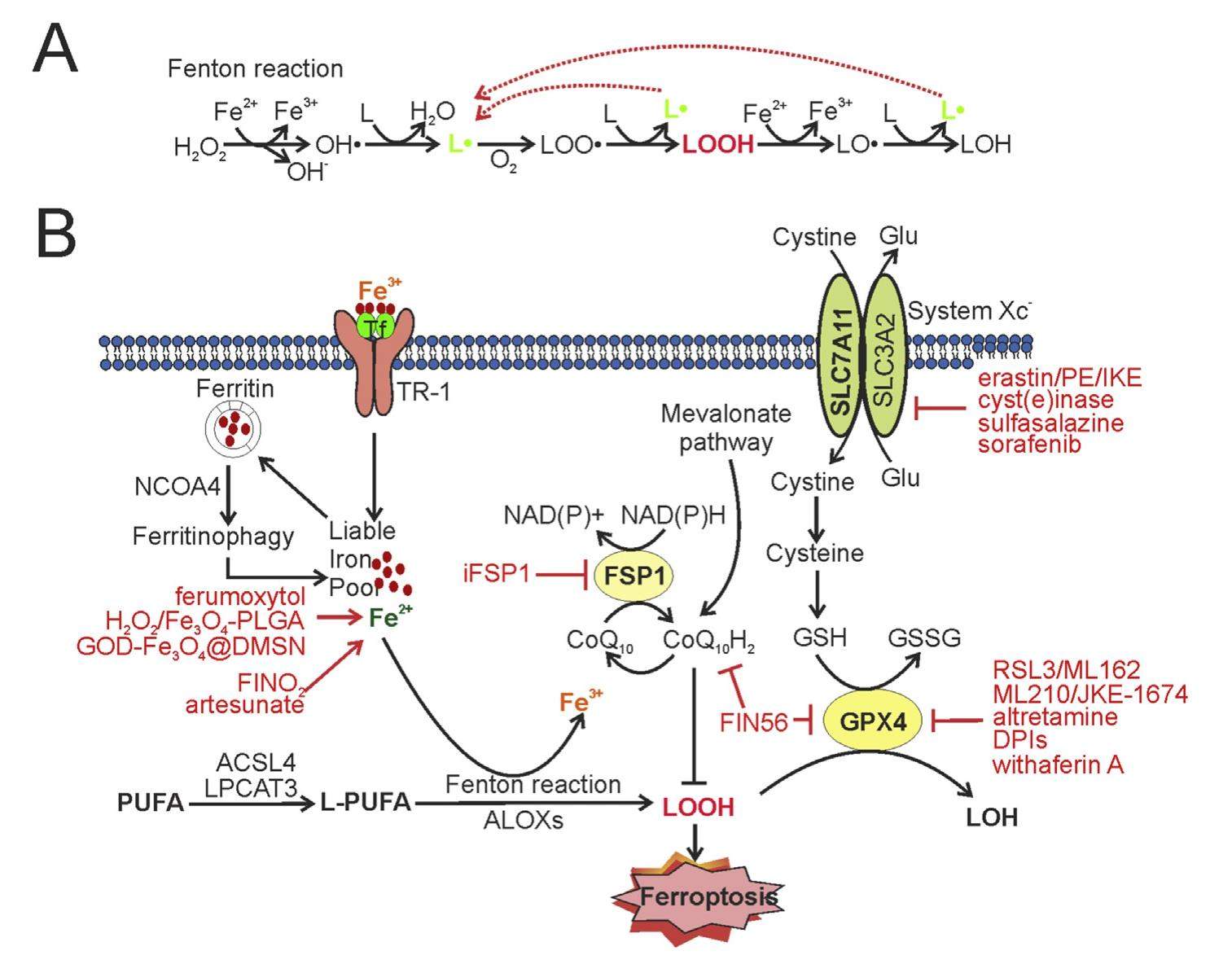
Ferroptosis: An emerging therapeutic opportunity for cancer


Ferroptosis, a new form of non-apoptotic, regulated cell death characterized by iron dependency and lipid peroxidation, is involved in many pathological conditions such as neurodegenerative diseases, heart ischemia/reperfusion injury, acute renal failure, and cancer. While metabolic dysfunctions can lead to excessive lipid peroxidation culminating in ferroptotic cell death, glutathione peroxidase 4 (GPX4) resides in the center of a network that functions to prevent lipid hydroperoxides from accumulation, thereby suppressing ferroptosis. Indeed, RSL3 and other small-molecule GPX4 inhibitors can induce ferroptosis in not only cultured cancer cells but also tumor xenografts implanted in mice. Similarly, erastin and other system Xc- inhibitors can deplete intracellular glutathione required for GPX4 function, leading to lipid peroxidation and ferroptosis. As therapy-resistant cancer cells are sensitive to GPX4-targeted therapeutic regimens, the agents capable of inducing ferroptosis hold great promises to improve current cancer therapy. This review will outline the molecular basis of ferroptosis, but focus on the strategies and the agents developed in recent years for therapeutic induction of ferroptosis. The potentials of these ferroptosis-inducing agents, which include system Xc- inhibitors, GPX4 inhibitors, and iron-based nanoparticles, in cancer therapy will be subsequently discussed.
